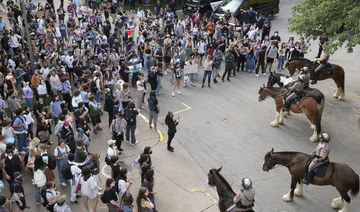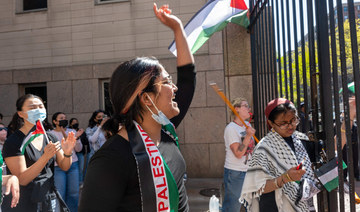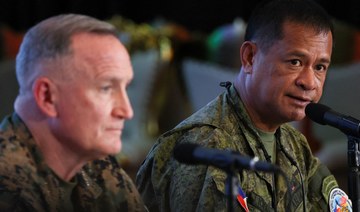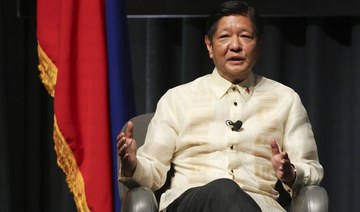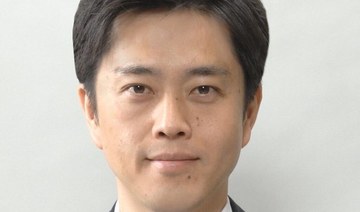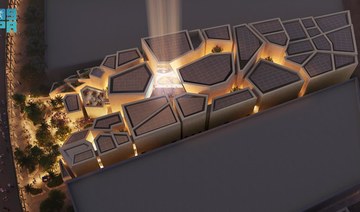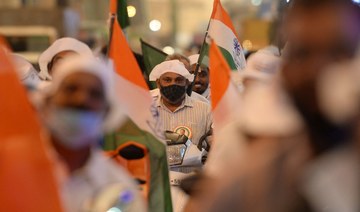PYONGYANG: She dances beneath portraits of two smiling dictators, a modern young woman in a central Pyongyang plaza who twirls to music calling on North Koreans to die for their leader.
When she speaks, a torrent of reverence tumbles out for North Korea’s ruling family, as if phrases had been plucked at random from a government newspaper: “The revolution of the Great Leader” ... “Laborers trust and venerate Marshal Kim Jong Un.” And as hundreds of students dance behind her in a choreographed display of loyalty, she is adamant about one thing: North Korea, she insists, has no generation gap.
“The spirit of the youth has remained the same as ever!” Ryu Hye Gyong says.
But look more closely — look beyond her words, beyond the propaganda posters on every street, and the radios playing hymns to the ruling family — and the unspoken reality is far more complicated.
A 19-year-old university student with a confident handshake and carefully styled hair, Ryu lives in a city that today feels awash in change. There are rich people now in Pyongyang, chauffeured in Mercedes even as most citizens of the police state remain mired in poverty. There’s a supermarket selling disposable diapers. On sidewalks where everyone once dressed in drab Maoist conformity, there are young women in not-quite miniskirts and teenage boys with baseball caps cocked sideways, K-pop style.
In this profoundly isolated country, a generational divide is quietly growing.
Here, where rulers have long been worshipped as all-powerful providers, young people have grown to adulthood expecting nothing from the regime. Their lives, from professional aspirations to dating habits, are increasingly shaped by a growing market economy and a quietly thriving underground trade in smuggled TV shows and music. Political fervor is being pushed aside by something else: A fierce belief in the power of money.
Conversations with more than two dozen North Korean refugees, along with scholars, former government officials and activists, make it clear that young people are increasingly unmoored from the powerful ideology the government long ago placed at the center of every life.
“When Kim Jong Un speaks, young people don’t listen,” says Han Song Yi, 24, who left the North in 2014, dreaming of pop-music stardom in the South. “They just pretend to be listening.”
In her tight jeans and gold-speckled eyeshadow, Han loves talking about fashion and the K-pop bands she and her friends secretly listened to back home. She can also deconstruct how the sudden emergence of short skirts in her hometown in the autumn of 2012 mirrored not just the ascension of Kim Jong Un, the new leader often photographed with his glamorous wife, but also the political cynicism growing around her.
“North Korea in the past, and North Korea today are so different,” she says.
Nobody in North Korea will talk to an outsider about this, and it’s easy to see why.
Stand at nearly any Pyongyang street corner and reminders of the state’s power are everywhere. Mounted portraits show the first two rulers: Kim Il Sung, who shaped the North into one of the world’s most repressive states, and his son, Kim Jong Il, who created the personality cults that now dominate public life. Immense rooftop signs spell out praise for grandson Kim Jong Un, the ruling party and the military.
The message is unmistakable: “People are always careful about what they say,” says Han.
For generations, propaganda about the Kim family was all that most North Koreans knew, a mythology of powerful but tender-hearted rulers that still suffuses everything from children’s stories to TV shows.
It’s an emotional tug felt by many older North Koreans. In part that’s because they remember the days of relative prosperity, when the state provided food, apartments and clothing.
An economic shift began in the mid-1990s, when Soviet aid ended and devastating floods caused widespread famine. The police state weakened. Smuggling flourished. While the state eventually tightened its hold again, private enterprise just grew.
But to people who came of age after the famine, when it had become clear the regime was neither all-powerful nor all-providing, the propaganda is often just background noise.
“After a while, I stopped paying attention,” says Lee Ga Yeon, who began helping support her family as a teenager during the famine by selling food door to door. “I didn’t even think about the regime anymore.”
That lack of interest frightens the regime, whose legitimacy depends on its ability to remain at the core of life.
“They know that young people are where you get revolutions,” says Hazel Smith, a North Korea scholar at SOAS, University of London and former aid worker in North Korea. “This is the cleavage that the government is worried about.”
Kim Jong Un, who wasn’t even 30 when he came to power after his father’s 2011 death, now faces the challenge of his own generation.
On his gentler days, Kim has reached out to young people. There was an increase in youth-oriented rallies after Kim’s ascension, and public pledges of youth loyalty. There’s propaganda now clearly aimed at young people, like the all-woman Moranbong Band, which performs in tight skirts and high heels.
Most of these young people have grown up with at least some access to smuggled DVDs or flash drives, and South Korean soap operas are now beloved, despite being officially banned. To many young Northerners they are windows onto a modern world.
Today, couples in Pyongyang can occasionally be spotted holding hands. In a culture where arranged marriages were the norm until very recently, young people now choose their own spouses. And college students dream of business jobs.
But while the generational divide has grown, there have been no signs of youthful anger: no university protests or political graffiti. Because the power of the police state remains immense. And because the gap isn’t about politics.
“It’s not about the regime,” says Lee, who now studies literature at one of South Korea’s top universities. “It’s about money.”
Money now courses through North Korea. Experts believe the private sector, from small traders to textile factories, accounts for as much as half of North Korea’s economy. There’s also much more to buy now: battery-powered bicycles, Chinese electronics, solar panels for electricity outages.
“In the past, everybody wanted to be a government official, that was the number-one dream,” says Lee. “But more and more, people know that money can solve everything.”
In North Korea, a generation gap grows behind the propaganda
In North Korea, a generation gap grows behind the propaganda
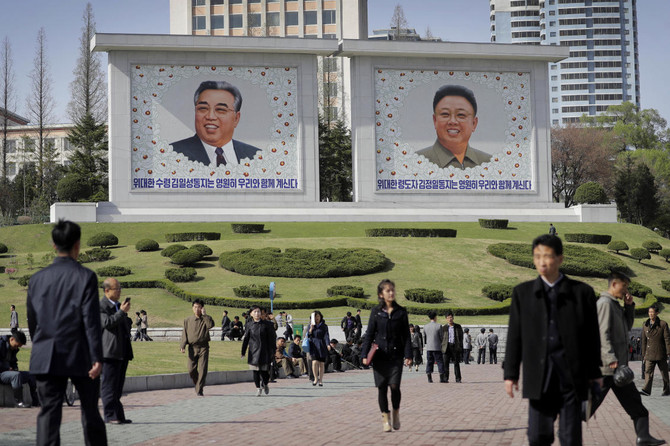
Berlin police clear pro-Palestinian camp from parliament lawn
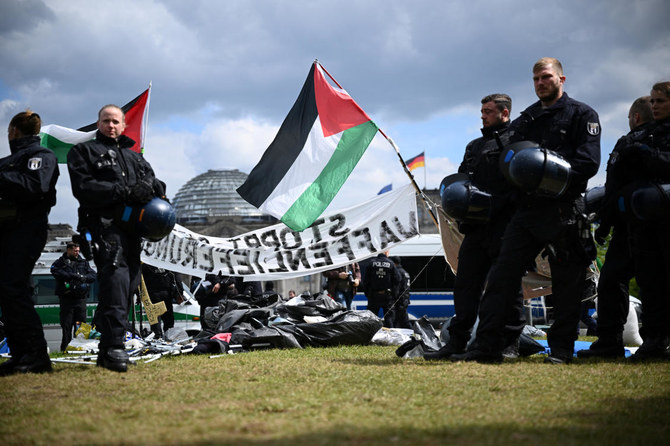
- Police dismantled tents, forcibly removed protesters and blocked the surrounding area to stop others arriving
- "The idea was to draw attention to that and ... to the German complicity and active enabling of the Israeli genocide in Gaza," the camp organizer, Jara Nassar, said
BERLIN: Berlin police on Friday began clearing a pro-Palestinian camp set up in front of the German parliament by activists demanding the government stop arms exports to Israel and end what they say is the criminalization of the Palestinian solidarity movement.
Police dismantled tents, forcibly removed protesters and blocked the surrounding area to stop others arriving.
The action followed clashes between demonstrators and police on US campuses and a blockade at Paris’s Sciences Po university, part of international protests to decry Israel’s military campaign in Gaza and Western support for Israel.
The Berlin camp ‘Besetzung Gegen Besatzung’ — ‘Occupy Against Occupation’ — began on April 8, coinciding with the start of International Court of Justice hearings in Nicaragua’s case against Germany for providing military aid to Israel.
“The idea was to draw attention to that and ... to the German complicity and active enabling of the Israeli genocide in Gaza,” the camp organizer, Jara Nassar, told Reuters.
Israel strongly denies accusations that its offensive in Gaza, which aims to destroy the Palestinian militant group Hamas, constitutes a genocide.
Nassar and a dozen protesters sat on the ground, chanting pro-Palestinian slogans and songs as police with loudspeakers called on them to leave.
“We look at what is happening in the US ... with admiration. There is no reason to believe we should stop now,” said Udi Raz, a PhD student at Berlin’s Free University and a member of the Jewish Voice association.
Raz, who wore a Jewish kippah with the Palestinian flag colors and held his phone in a live social media broadcast of the clearance, said Jewish activists had joined the camp and held a candle-lit Passover dinner there this week.
Police said the prohibition order for the camp, which had been granted authorization at the start of the protest, was due to repeated violations committed by some protesters, including the use of unconstitutional symbols and forbidden slogans.
“Protection of gatherings cannot be guaranteed at this point because public safety and order are significantly at risk,” police spokesperson Anja Dierschkesaid said, adding tents had to be moved daily under local regulations to maintain the lawn.
“For the German government, grass matters more than the lives of more than 40,000 innocent people in Gaza murdered by the Israeli military,” Raz said.
Philippine police kill an Abu Sayyaf militant implicated in 15 beheadings and other atrocities
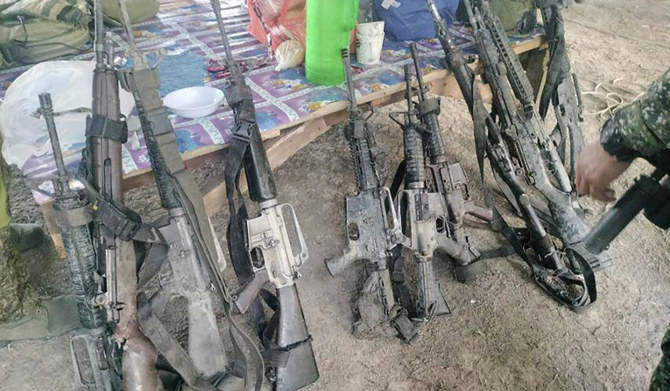
- A confidential police report said that Abdulsaid had been implicated in at least 15 beheadings in Basilan, including of 10 Philippine marines in Al-Barka town in 2007 and two of six kidnapped Vietnamese sailors near Sumisip town in 2016
MANILA: Philippine forces killed an Abu Sayyaf militant, who had been implicated in past beheadings, including of 10 Filipino marines and two kidnapped Vietnamese, in a clash in the south, police officials said Friday.
Philippine police, backed by military intelligence agents, killed Nawapi Abdulsaid in a brief gunbattle Wednesday night in the remote coastal town of Hadji Mohammad Ajul on Basilan island after weeks of surveillance, security officials said.
Abu Sayyaf is a small but violent armed Muslim group, which has been blacklisted by the US and the Philippines as a terrorist organization for ransom kidnappings, beheadings, bombings and other bloody attacks. It has been considerably weakened by battle setbacks, surrenders and infighting, but remains a security threat particularly in the southern Philippines, home to minority Muslims in the predominantly Roman Catholic nation.
Abdulsaid, who used the nom de guerre Khatan, was one of several Abu Sayyaf militants who aligned themselves with the Daesh group.
A confidential police report said that Abdulsaid had been implicated in at least 15 beheadings in Basilan, including of 10 Philippine marines in Al-Barka town in 2007 and two of six kidnapped Vietnamese sailors near Sumisip town in 2016. The Vietnamese were seized from a passing cargo ship.
He was also involved in attacks against government forces in 2022 and a bombing in November that killed two pro-government militiamen and wounded two others in Basilan, the report said.
Abdulsaid was placed under surveillance in February, but police forces couldn’t immediately move to make a arrest because of the “hostile nature” of the area where he was eventually gunned down, according to the report.
On Monday, Philippine troops killed the leader of another Muslim rebel group and 11 of his men blamed for past bombings and extortion in a separate clash in a marshy hinterland in Datu Saudi Ampatuan town in southern Maguindanao del Sur province, the military said.
Seven soldiers were wounded in the clash with the members of the Bangsamoro Islamic Freedom Fighters.
The Abu Sayyaf and the Bangsamoro Islamic Freedom Fighters are among a few small armed groups still struggling to wage a separatist uprising in the southern Philippines.
The largest armed separatist group, the Moro Islamic Liberation Front, signed a 2014 peace pact with the government that eased decades of sporadic fighting.
Moro Islamic Liberation Front rebel commanders became parliamentarians and administrators of a five-province Muslim autonomous region in a transition arrangement after signing the peace deal. They are preparing for a regular election scheduled for next year.
Saudi Pavilion at Expo 2025 Osaka: A journey through Saudi Arabia’s transformation, Vision for Future
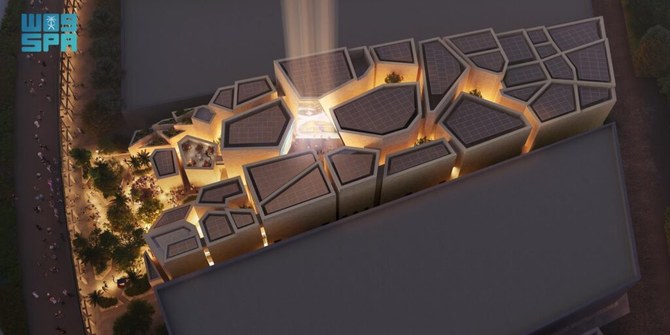
- Saudi chefs will present a mix of flavours inspired by different regions of the Kingdom
- More than 200 selections of souvenirs will be displayed in the gift shop, each a testament to authentic Saudi craftsmanship
OSAKA: The Saudi pavilion participating in Expo 2025 Osaka in Japan has announced an unprecedented cultural and artistic program encompassing more than 700 events to introduce visitors to Saudi Arabia’s rich heritage, mega projects and various economic opportunities.
The Saudi pavilion at the expo will present Saudi Arabia’s past, transformational journey and vision for a sustainable and prosperous future. It will include a wide range of performances, such as traditional arts, classical music and fashion shows.
Saudi chefs will present a mix of flavours inspired by different regions of the Kingdom, and Saudi musicians and artists will perform daily to highlight the Kingdom’s rich cultural heritage.
A dedicated area for prominent figures will host various sessions and display a series of presentations to inform companies and investors of all the economic opportunities available in the Kingdom.
More than 200 selections of souvenirs will be displayed in the gift shop, each a testament to authentic Saudi craftsmanship.
Visitors from around the world will learn about AlUla City, located in north-west Saudi Arabia, which is home to dramatic desert landscapes, spectacular rock formations and some of the Middle East’s most significant ancient sites.
Major Saudi projects will be highlighted, including NEOM, the land of the future; THE LINE, the 170-kilometer-long city that will be the future of urban living; Oxagon, which is redefining the traditional industrial model; and Trojena, the mountain resort of NEOM.
The pavilion will also showcase aspects of ‘Green Riyadh,’ a revolutionary project that aims to transform Saudi Arabia’s capital into a green oasis by planting 7.5 million trees by 2030. This project aims to place Riyadh as one of the world’s top 100 most livable cities.
It will also highlight the Reefscape Restoration Initiative, launched by the King Abdullah University of Science and Technology (KAUST). This initiative seeks to conserve, enhance, and restore 100 hectares of coral reefscape in the Red Sea and design and build the world’s largest Coral Nursery at Jeddah beach, with an expected coral production of 400k per year.
General Commissioner of the Saudi Pavilion Othman Al-Mazyad said: “We look forward to enabling visitors of the Saudi pavilion to learn about the Kingdom, its traditions, journey of transformation and vision for a sustainable future.”
Relations between Saudi Arabia and Japan have been continuously growing, thanks to the Saudi-Japanese Vision 2030. The Saudi Pavilion at Expo 2025 Osaka will allow companies and investors from Japan and worldwide to learn about the Kingdom’s various opportunities, aiming to forge new partnerships and expand existing agreements.
India’s mammoth election heats up in trend-defining second phase
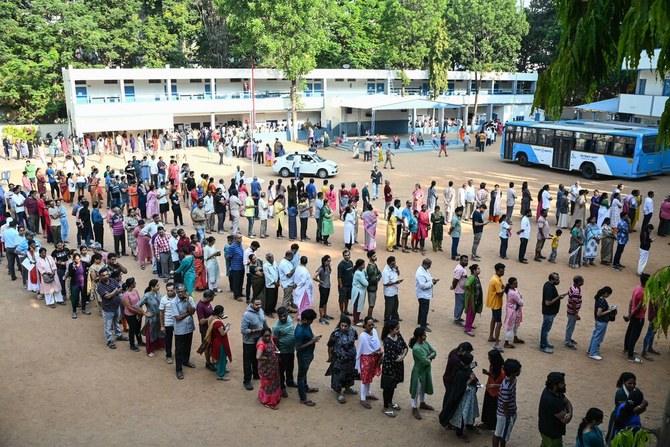
- Second phase is seen by analysts as defining dynamics of rest of the polls
- Turnout in first phase was lower than expected — 66 percent, compared with 70 percent in 2019
NEW DELHI: India’s mammoth general election rolled on Friday into its second phase, which is widely believed to likely set the trend for the rest of the polls.
More than 968 million voters were registered to cast the ballot vote in the world’s most populous country, where incumbent Prime Minister Narendra Modi and his Hindu nationalist Bharatiya Janata Party are eyeing a rare third straight five-year term in power.
The first phase of the vote was on April 19 as polling takes place over six weeks, with results expected on June 4. The other voting dates will be May 7, May 13, May 20, May 25 and June 1.
India has a total of 28 states and eight federally governed territories. Some regions complete the process on a single day, and others spread it out over several phases.
Voting last week took place in 21 states and union territories, with nearly 169 million people eligible to cast their ballots. In the second phase, more than 160 million people were expected to vote across 13 states and federal territories.
As many as 1,202 candidates contested the polls on Friday, vying for 88 of the 543 seats in the lower house of Parliament. In the previous phase, 102 seats were up for grabs.
More than half of the 88 seats were in the southern states of Kerala and Karnataka and the northwestern state of Rajasthan.
The party or coalition that wins at least 272 seats will form the government.
Modi, who ahead of the election was targeting 400 seats for his BJP-led National Democratic Alliance, is challenged by an alliance of two dozen opposition parties — the Indian National Developmental Inclusive Alliance, or INDIA, led by the Congress party, which has ruled the country for close to 45 years since independence in 1947.
‘MINI-GENERAL ELECTION’
The second phase of India’s polls is seen by analysts as defining the dynamics of the remaining five phases. One of the factors was the voter turnout, which in this election might be lower.
In the first phase, 66 percent of those eligible to vote cast their ballot — compared with 70 percent in 2019.
“From the first phase of the election, the message went that there is a silent undercurrent against the BJP and the dip in the voting percentage sent the signal that the BJP would slip in its strongholds in northern India particularly Uttar Pradesh,” Umakant Lakhera, political commentator in Delhi, told Arab News.
“If the trend of voters’ perceived apathy toward the election in general — and the BJP in particular — continues, then it’s an opportunity for the opposition Congress party to consolidate and mobilize its resources to widen its reach and capitalize on anti BJP sentiment.”
The key leader of the opposition coalition and Congress member is Rahul Gandhi, the son of Rajiv Gandhi, a grandson of Indira Gandhi, and a great-grandson of Jawaharlal Nehru, all of whom served as prime ministers of India.
Gandhi is seeking re-election from Wayanad in Kerala — the only major state that has never elected a BJP member of parliament, and where it was not a main competitor. This year, Modi’s party has been trying to make inroads into the state’s political scene.
The main contenders, besides Gandhi, are Annie Raja of the Communist Party of India and BJP’s K. Surendran.
“Kerala always has witnessed bipolar politics, but the BJP has been trying this time to make it a triangular contest, and this election will test whether a third force can find space in Kerala or not,” Prof. G. Gopa Kumar, political scientist and adviser to the Kerala-based Center for Public Policy Research, told Arab News.
“The second phase will test whether the stigma of the BJP of being an outsider in Kerala will continue or not, whether the stigma of not winning a seat in Kerala will continue or not.”
Far from Kerala, in the north, where several states were also going to the polls, another test was taking place at the same time — for the Congress party. Congress plunged to a historic low when it was swept out of power by the BJP in the 2014 general vote, and won its second-lowest number of 52 seats in 2019.
“The second phase is a mini-general election. What is at stake is whether the Congress is going to challenge the dominance of the BJP in the north Indian states like Uttar Pradesh, Rajasthan, Madhya Pradesh or not,” Kumar said.
“The contest is getting serious from now on. For the Congress, it is a survival question as they have to prove that they can defeat the BJP and survive as a big force.”
Although surveys suggest Modi will easily win a comfortable majority in parliament, his 400-seat target, often repeated ahead of the polls, has not been cited since last week’s first phase.
Asad Rizvi, an analyst based in Lucknow, the capital of India’s most populous state and BJP stronghold, Uttar Pradesh, said that the performance was apparently not as good as expected, despite the repetition of the party’s tactics of polarization along religious lines.
“A perception has come to dominate after the first phase of elections that the BJP has not performed well in its strongholds in Uttar Pradesh, therefore, the BJP will have a tough time mobilizing its core voters to retain the seats,” he told Arab News.
“The second phase is also crucial that will test whether the BJP’s communal agenda is working or not.”
Ukraine’s Zelensky calls for air defense systems as allies meet
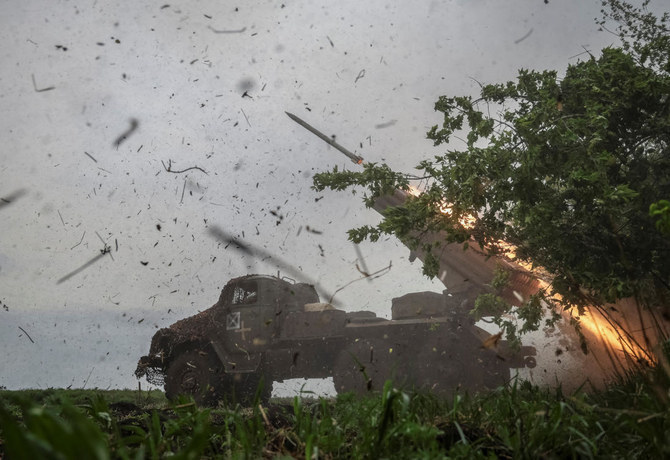
- “We need the ability to shoot down the air combat aircraft so that they do not approach our positions and borders,” Zelensky said
- US Defense Secretary Lloyd Austin said the meeting would focus on Ukraine’s air defense capabilities
WASHINGTON: Ukrainian President Volodymyr Zelensky on Friday called for additional air defense systems to be sent to Kyiv to help protect against Russian strikes, adding that a pause in US funding had helped Moscow seize the initiative.
“This year, Russian jets (have) already used more than 9,000 guided aerial bombs against Ukraine and we need the ability to shoot down the air combat aircraft so that they do not approach our positions and borders,” Zelensky said at the start of a virtual meeting led by the United States on helping arm Ukraine.
US Defense Secretary Lloyd Austin said the meeting would focus on Ukraine’s air defense capabilities.
The meeting comes days after Congress emerged from a half-year of deadlock to approve a $61 billion aid package for Ukraine. President Joe Biden’s administration quickly announced $1 billion in artillery, air defenses and other hardware would soon be heading to Ukrainian front lines.
“While we were waiting for a decision on the American support, the Russian army managed to seize the initiative on the battlefield,” Zelensky said.
“We can still now, not only stabilize the front, but also move forward achieving our Ukrainian goals in the war,” he added.
The United States hopes its new deliveries of weaponry will help Ukraine rebuild defenses and refit its forces as it recovers from a gap in US assistance, but it does not expect Kyiv to launch large-scale offensive operations against Russian forces in the near term.
The influx of weapons could improve Kyiv’s chances of averting a major Russian breakthrough in the east, just over two years since the start of Moscow’s full-scale invasion, military analysts say.
But it remains unclear how much pressure Kyiv can apply on Russia after months of rationing artillery as its stocks ran low. Kyiv also faces manpower shortages on the battlefield and questions linger over the strength of its fortifications along a sprawling, 1,000-km (621-mile) front line.


